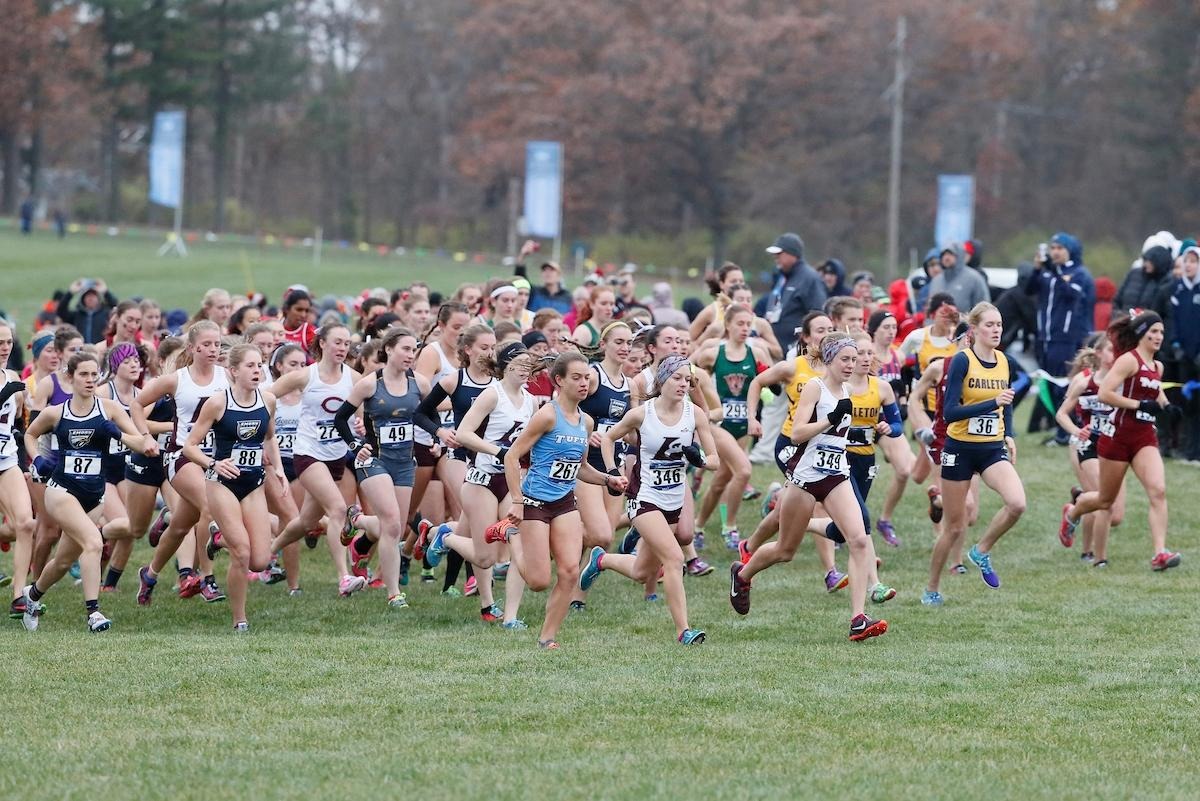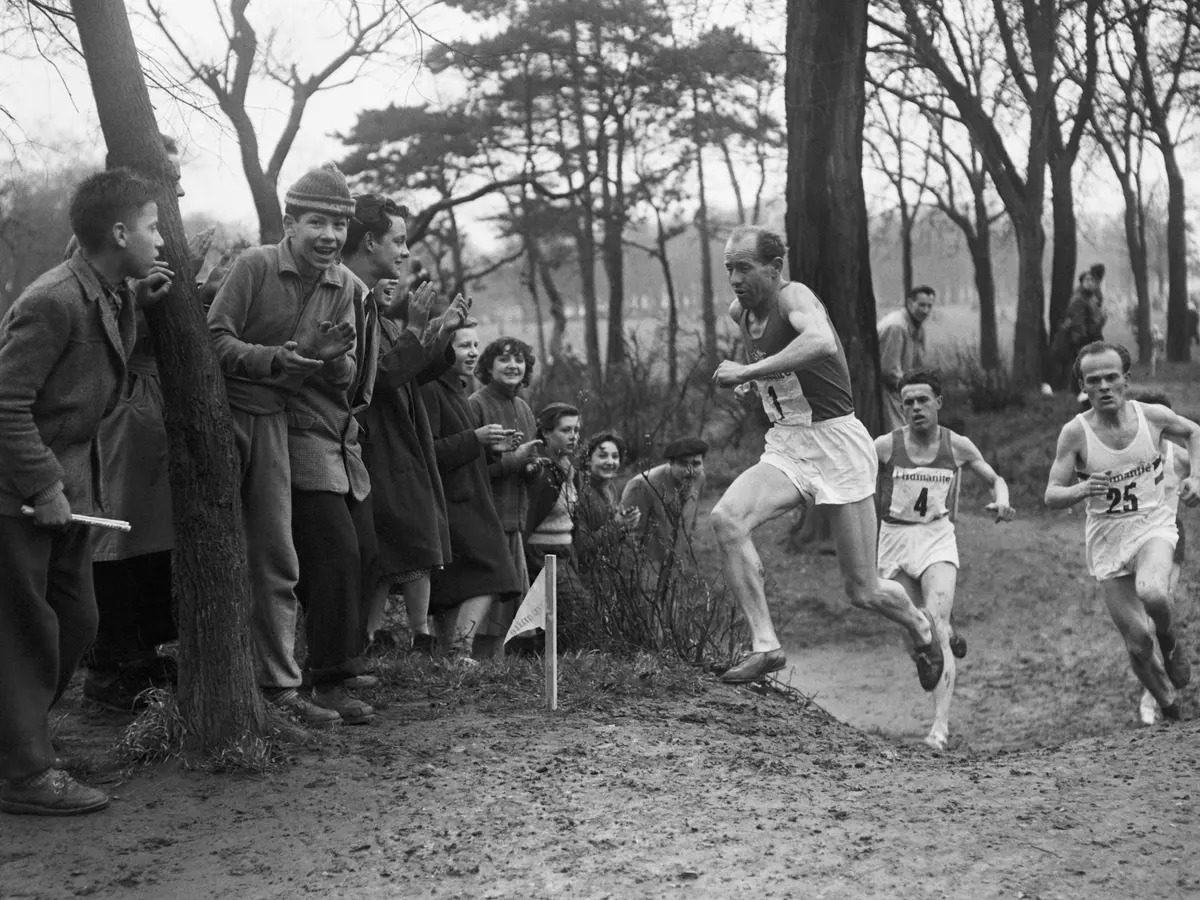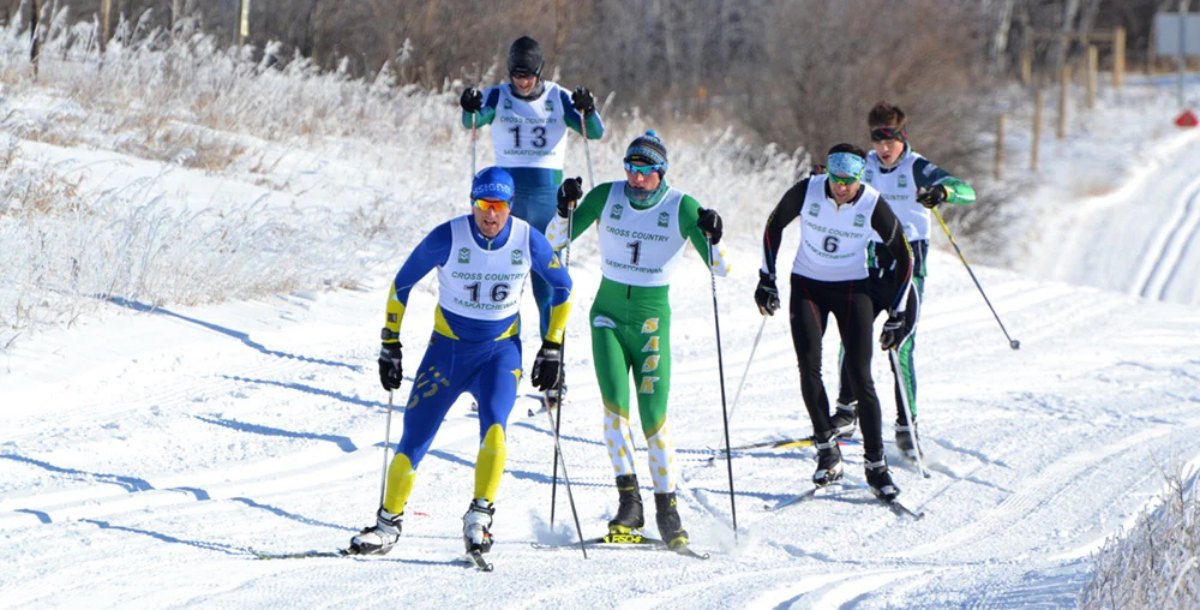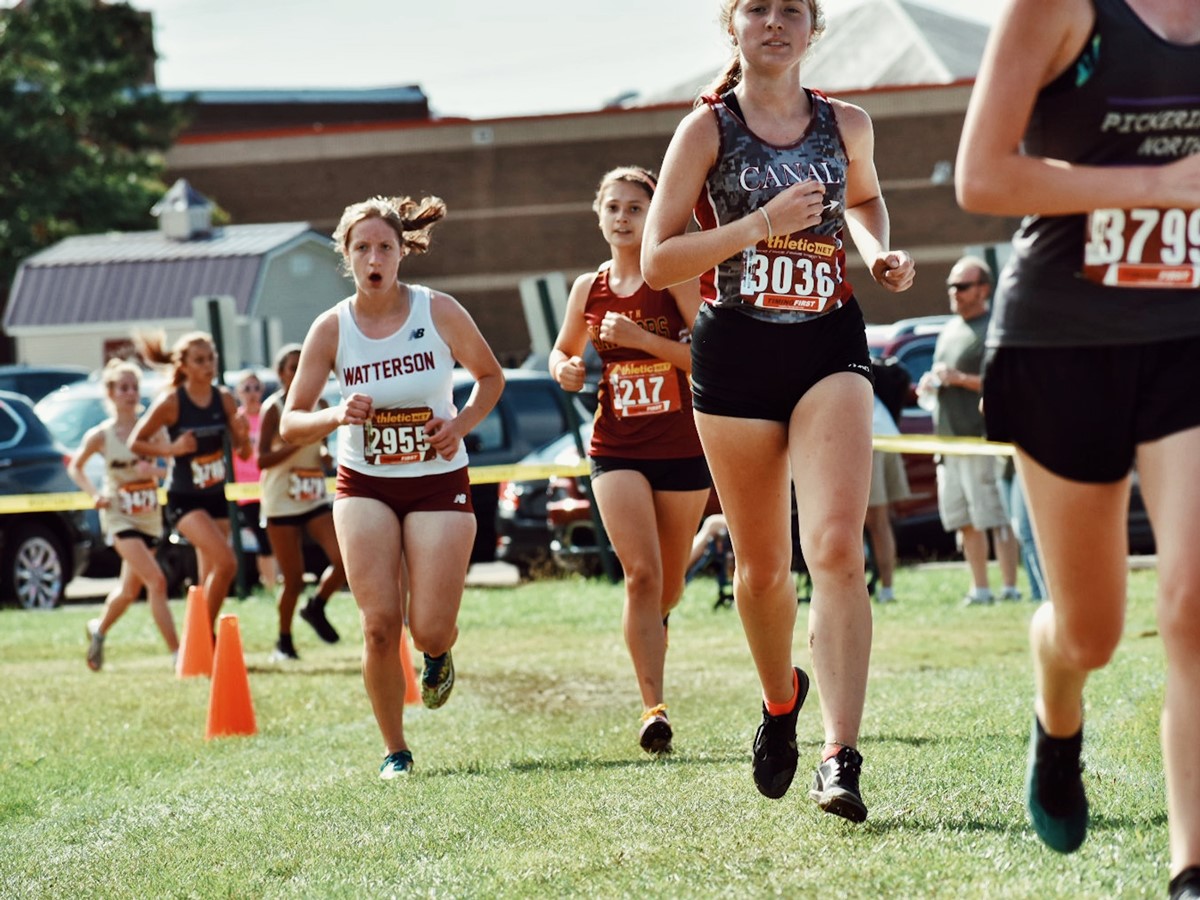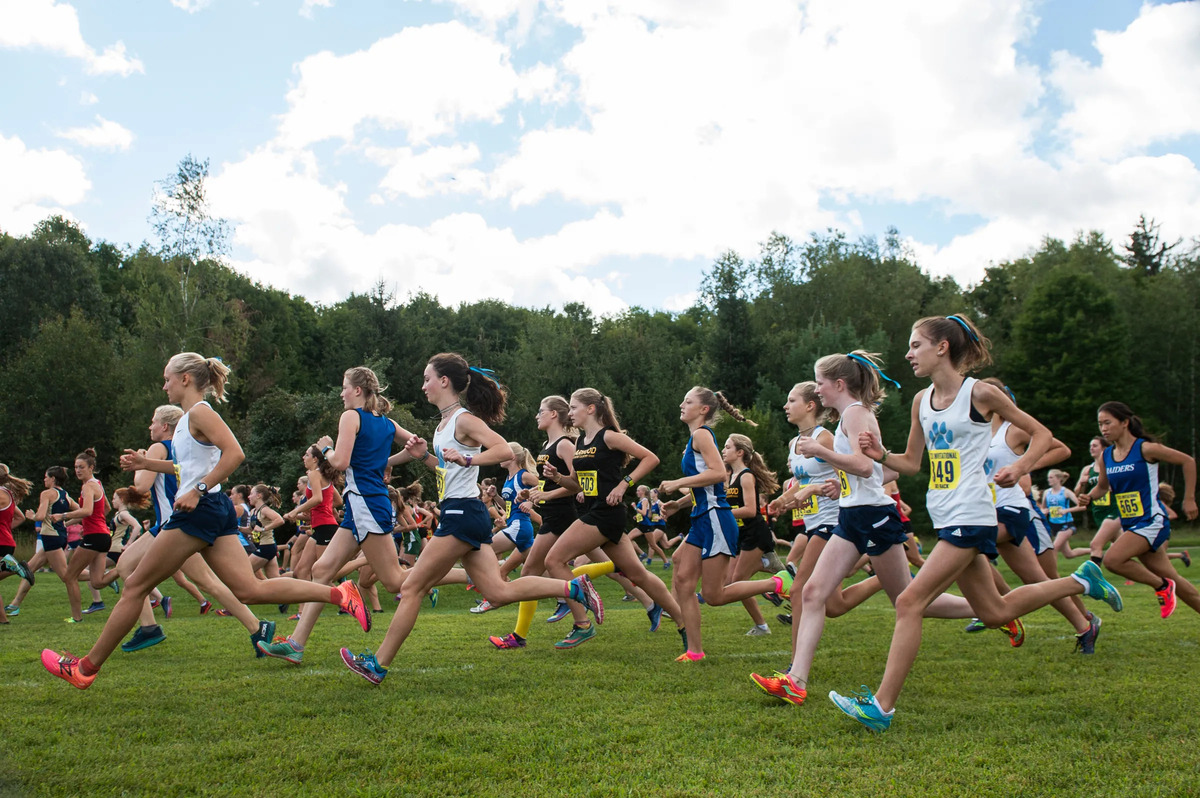

Featured
What Are The Rules Of Cross Country
Modified: January 22, 2024
Discover the rules of cross country running in this comprehensive guide. Learn the techniques, strategies, and training tips for featured races.
Introduction
Cross country running is a thrilling and challenging sport that combines endurance, strategy, and team spirit. It is a form of racing where athletes compete on natural terrain, often in parks or open spaces. Unlike track and field events that take place on a closed circuit, cross country events are held on varied terrain, including grass, dirt trails, and even hills.
With its origins dating back to ancient times, cross country has evolved into a popular sport worldwide. It not only tests the physical and mental strength of runners but also promotes camaraderie and teamwork among athletes.
As a spectator sport, cross country offers excitement and suspense, as runners navigate through different obstacles and vying for victory. In this article, we will delve into the various aspects of cross country racing, including the race distance, course layout, scoring system, rules for runners, mandatory equipment, start procedure, race strategy, and more.
Whether you are a participant, coach, or spectator, understanding the rules and intricacies of cross country running is essential to fully appreciate and enjoy this exhilarating sport.
The Basics of Cross Country
Cross country running is a sport that requires both physical endurance and mental fortitude. The objective is for runners to complete a designated distance in the shortest amount of time possible.
The sport is typically divided into different age categories, including juniors, seniors, and masters. Each category has specific rules and regulations governing the race.
In cross country, runners follow a predetermined course that encompasses various types of terrain. This can range from open fields and grassy trails to wooded areas and even steep hills. The diversity of the terrain adds an element of challenge and excitement to the race.
Unlike other track and field events, cross country races are not held in a closed circuit. Instead, runners navigate through a series of markers and flags that guide them along the course. These markers are strategically placed to prevent participants from taking shortcuts or going off course.
Scoring in cross country is based on the position of each runner at the finish line. The team with the lowest score, determined by adding up the individual positions of its top finishers, is declared the winner. Individual rankings are also acknowledged and celebrated, with awards given to the top-performing runners.
As with any sport, cross country has its own set of rules and regulations that govern the conduct of both runners and coaches. These rules ensure fair competition and the safety of all participants.
Understanding the basics of cross country is essential for both athletes and spectators alike. By familiarizing oneself with the race distance, course layout, scoring system, and rules, one can better appreciate the efforts and strategies employed by the runners.
In the next sections, we will delve into more specific details of cross country running, including the start and finish line, mandatory equipment, start procedure, race strategy, and more.
Race Distance
The race distance in cross country can vary depending on the age category and level of competition. It typically ranges from 5 kilometers (3.1 miles) to 10 kilometers (6.2 miles) for adults, while younger age groups may have shorter distances.
The longer race distances challenge runners’ endurance and require strategic pacing to maintain a steady speed throughout the course. On the other hand, shorter distances demand increased speed and agility to quickly maneuver through the course.
For junior categories, the race distances are usually shorter to accommodate the age and physical capabilities of younger athletes. These distances can range from 2 kilometers (1.2 miles) to 4 kilometers (2.5 miles), encouraging participation and ensuring a rewarding experience for all competitors.
In international cross country competitions, such as the World Championships and the Olympics, the race distance for senior men is typically 12 kilometers (7.5 miles), while senior women compete over a distance of 8 kilometers (5 miles). These longer distances showcase the supreme endurance and stamina of elite cross country runners.
The varying race distances add to the excitement and challenge of cross country running. Runners must adapt their training and race strategies according to the specific distance they will be competing in.
Regardless of the race distance, cross country tests the limits of physical and mental endurance, requiring runners to persevere and push through fatigue to reach the finish line.
Next, we will explore the course layout and the obstacles that runners encounter along the way.
Course Layout
The course layout in cross country running can vary greatly, as it is designed to challenge runners with a mixture of different terrains and obstacles. The course is typically set in a natural environment such as a park, forest, or open field, offering a scenic backdrop for the race.
Course designers aim to create an engaging and demanding route that tests the runners’ endurance, speed, and agility. They often incorporate elements such as hills, uneven terrain, grassy patches, muddy sections, and even water crossings to add variety to the race.
The layout of the course is marked by a series of flags or markers positioned along the route. These markers serve as guideposts for the runners, ensuring that they stay on the designated course and do not take any unauthorized shortcuts.
In addition to the markers, there may be strategically placed barriers, known as hurdles, to further challenge the athletes. Hurdles come in various heights and are meant to be jumped over, adding an element of excitement and skill to the race.
The course may also feature tight turns and sharp corners, requiring runners to navigate quickly and efficiently to maintain their momentum. This requires agility and strategic positioning to avoid being boxed in by other competitors.
Course layouts can be different for each race, providing a unique and unpredictable challenge for the participants. It is important for runners to familiarize themselves with the course beforehand, so they can strategize and plan their race strategy accordingly.
The course layout not only presents physical obstacles for the runners but also offers visual spectacle for the spectators. The natural surroundings and varied terrain make for an exciting viewing experience as the athletes navigate through the course.
As we move forward, we will explore the intricacies of the start and finish line, as well as the markers and flags that guide the runners along the course.
Start and Finish Line
The start and finish line are two crucial points in a cross country race, marking the beginning and end of the course. These points are where anticipation builds and triumph is celebrated.
The start line is where all the runners assemble at the beginning of the race. The location of the start line is typically wide enough to accommodate all participants and allow for a fair start. It is essential for runners to position themselves strategically on the start line to avoid getting caught in a bottleneck or being boxed in by other competitors. The start line is marked by a prominent flag or banner, signaling the start of the race.
At the sound of the starting gun or whistle, the runners set off in a mass start. The athletes must pace themselves carefully in the early stages of the race, as the excitement and adrenaline can lead to a fast start that could be difficult to sustain.
The finish line is the ultimate goal for every runner. It is where their efforts are rewarded and their achievements are acknowledged. The finish line is typically marked by a banner or arch, often adorned with the race logo or sponsor branding.
As the runners approach the finish line, the atmosphere is filled with anticipation and excitement. Spectators cheer and encourage the participants, creating a vibrant and energetic atmosphere. The finish line may also include timing mat systems to accurately record each runner’s finishing time.
At the finish line, officials and volunteers are present to record the runners’ finishing positions and times. This information is vital for determining the individual and team rankings, as well as for distributing awards and recognition.
The start and finish line are critical points that anchor the race experience. They provide a sense of structure and organization to the event while serving as milestones for the runners’ progress.
In the next section, we will explore the role of markers and flags along the course, ensuring that runners stay on track and navigate the correct route.
Markers and Flags
Markers and flags play a crucial role in guiding runners along the cross country course. They ensure that participants stay on track and follow the designated route throughout the race.
Markers are placed at regular intervals to indicate the direction of the course. They are typically small signs or arrows that are easily visible to the runners. These markers are strategically positioned, especially at points where there may be multiple possible routes or turns. This ensures that all participants follow the same path and complete the required distance.
Flags are commonly used as additional visual indicators along the course. These flags are usually brightly colored and placed at key points, such as challenging sections or significant course features. They help runners identify specific areas or obstacles on the course, allowing them to make quick decisions and adjust their strategies accordingly. The flags also serve as motivational markers and can boost runners’ morale during the race.
Markers and flags are typically positioned strategically to prevent runners from taking shortcuts or deviating from the designated course. Course designers place them in a way that challenges the runners while maintaining a fair and consistent route for everyone.
It is essential for runners to pay attention to the markers and flags throughout the race. Deviating from the marked course can result in disqualification or penalties, as it compromises the integrity of the competition.
Officials and volunteers monitor the placement of markers and flags before and during the race to ensure that they are properly positioned and clearly visible. If any markers or flags are missing or misplaced, it is crucial to notify the officials so that necessary adjustments can be made promptly.
Markers and flags not only serve a practical purpose but also add to the visual appeal of the cross country course. Their presence creates a sense of excitement and anticipation for both runners and spectators.
As we move forward, we will explore the scoring system in cross country, determining the winners based on their individual and team performances.
Scoring System
The scoring system in cross country is designed to determine the individual and team rankings based on the finishing positions of the runners. It is a vital component that adds a competitive element to the sport.
In team competitions, each team consists of several runners who compete against other teams. The team with the lowest score is declared the winner. The scoring is based on the finishing positions of the team’s top runners. For example, if a team has five runners, the scores of the top five finishers from that team are added together. The team with the lowest cumulative score wins.
Individual rankings are also acknowledged and awarded in cross country races. The first runner to cross the finish line is the winner, and subsequent finishers are ranked accordingly. Individual rankings are determined by the official time recorded at the finish line.
In larger cross country races, where multiple teams and runners participate, the scoring system may include additional categories such as age groups or divisions. This allows for fair competition among runners in similar age ranges or skill levels.
In the scoring system, runners are assigned points based on their finishing position. The runner who finishes first earns one point, the second-place finisher receives two points, and so on. The team or individual with the lowest overall score is declared the winner.
In the event of a tie between two or more teams or individuals, tiebreaker rules are applied. These rules often consider the finishing position of the team’s or individual’s next highest-placed runner. This ensures that there is a fair determination of the winner in case of a tie.
The scoring system in cross country provides both individual and team goals for the participants. It fosters a sense of competition and drives runners to push their limits and strive for personal and team success.
In the next sections, we will delve into the specific rules and regulations for runners, mandatory equipment, start procedure, race strategy, and more.
Rules for Runners
Cross country running has a set of rules and regulations that govern the conduct of the runners during the race. These rules ensure fair competition and uphold the integrity of the sport. It is important for all participants to familiarize themselves with these rules to avoid penalties or disqualification.
One key rule is that runners must follow the designated course laid out by the race organizers. Deviating from the course or taking shortcuts is strictly prohibited and can result in disqualification. Runners must adhere to the markers, flags, and instructions provided along the course to stay on track.
Physical contact between runners during the race is generally discouraged but can happen unintentionally. It is essential for runners to maintain good sportsmanship and avoid impeding or obstructing other participants. Deliberate pushing, tripping, or any unsportsmanlike behavior can lead to penalties or disqualification.
Another important rule is related to pacing. Runners should not receive any outside assistance during the race, such as pacing from non-participants or vehicles. This ensures fair competition and a level playing field for all runners. The use of performance-enhancing drugs or illegal substances is strictly prohibited and can result in severe consequences.
The order of finish at the end of the race is determined by the position of the runner’s torso. The torso is defined as the part of the body from the shoulders to the hips. It is important for runners to cross the finish line with their torso, as this determines their official finishing position.
The rules for runners may vary depending on the specific race or competition. It is essential for participants to familiarize themselves with the rules and regulations provided by the race organizers prior to the event.
Compliance with these rules ensures a fair and competitive environment for all runners. It fosters a sense of sportsmanship and respect among participants, enhancing the overall cross country experience.
Next, we will explore the mandatory equipment that runners must possess to ensure safety and fair competition.
Mandatory Equipment
In cross country running, there are specific mandatory equipment requirements that runners must adhere to. These requirements ensure the safety of the participants and create a level playing field for all competitors.
One of the essential pieces of equipment in cross country is proper running shoes. Runners must wear shoes that provide adequate support, cushioning, and traction. The choice of shoes may vary depending on the terrain and weather conditions of the race. It is important for runners to select shoes that are comfortable and suitable for the specific course.
Appropriate attire is also a mandatory requirement. Runners should wear lightweight, breathable clothing that allows for freedom of movement. The choice of clothing may depend on the weather conditions, including considerations for temperature, wind, rain, or sun exposure. It is recommended to wear layers that can be adjusted to maintain comfort throughout the race.
Some races may require runners to wear team uniforms or race bibs. These bibs often contain the runner’s race number, which is essential for official record-keeping and scoring purposes. Runners should ensure that their bibs are clearly visible and securely attached to their clothing during the race.
In certain cross country events, where the terrain is challenging or hazardous, other additional mandatory equipment may be required. This can include items such as spikes for added traction on muddy or slippery surfaces, or even safety gear like reflective vests or headlamps for races held in low-light conditions.
Race organizers will communicate the specific equipment requirements to all participants well in advance of the event. It is essential for runners to carefully review and comply with these requirements to ensure compliance and to avoid any penalties or disqualification.
By adhering to the mandatory equipment requirements, runners can compete safely and with confidence, knowing that they have the necessary gear to navigate the course effectively.
In the next sections, we will explore other important aspects of cross country running, including the start procedure, race strategy, rules for coaches, and guidelines for spectators.
Start Procedure
The start procedure is a crucial aspect of cross country running, as it sets the tone for the race and ensures a fair and orderly beginning for all participants. The start procedure may vary depending on the specific race and the number of runners involved.
One common start procedure in cross country is a mass start, where all the runners begin the race together. At the designated start time, a starting gun, whistle, or horn is used to initiate the race. This creates an intense and exhilarating atmosphere as all the runners set off simultaneously.
In larger races with a significant number of participants, a staggered start may be implemented. Runners are organized into groups or waves based on various factors such as age, gender, or ability level. Each group starts at a different time, with a specified interval between the waves. This ensures a smoother start and reduces congestion on the course.
At the start line, runners are positioned based on their race numbers or assigned starting positions. It is important for participants to line up in an orderly manner, ensuring that they are properly placed according to their expected pace.
As the race begins, runners must maintain good sportsmanship and adhere to the rules of the start procedure. It is crucial to avoid false starts, where a runner begins before the start signal. False starts can result in penalties or disqualification.
Runners should also be mindful of their positioning and avoid blocking or impeding other participants. It is essential to find a balance between finding open space and avoiding unnecessary contact with other runners.
In some races, there may be designated sections or lanes for faster runners to ensure a clear path ahead. This allows them to maintain their speed and avoid overcrowding at the start.
The start procedure in cross country is carefully designed to provide a fair and exciting beginning for all runners. It sets the stage for the competition and creates a sense of anticipation and adrenaline as the athletes embark on their race.
In the following sections, we will explore race strategy, rules for coaches, spectator guidelines, and the awards and recognition given in cross country running.
Race Strategy
Race strategy plays a crucial role in determining the success of a cross country runner. It involves careful planning and execution to optimize performance throughout the race. Here are some key factors to consider when developing a race strategy.
Pacing is a fundamental aspect of race strategy. Runners must find a balance between starting too fast, which can lead to early exhaustion, and starting too slow, which can result in falling behind. Understanding one’s own capabilities and setting a steady pace from the beginning is essential for a successful race.
Course familiarity is another important factor. Studying the course layout beforehand allows runners to identify potential challenges, such as hills or rough terrain, and adjust their strategy accordingly. Knowing where to conserve energy and where to push harder can make a significant difference in overall performance.
Effective positioning during the race is critical, especially at crucial points such as tight turns or uphill sections. Maintaining a good position allows runners to navigate through the course more efficiently and can help avoid being boxed in or impeded by other competitors. Finding the right balance between staying close to competitors and avoiding unnecessary contact is key.
Anticipating and adapting to race conditions is also important. Weather conditions, such as heat or rain, can impact performance and require adjustments in strategy. Similarly, being aware of the energy levels and performances of nearby competitors can influence decisions during the race.
Strategic surges or accelerations at key moments can help gain an advantage over competitors. These surges can be strategic bursts of speed to create distance or break away from a group. Timing these surges effectively and conserving energy for crucial points of the race can be a successful strategy.
Mental focus and resilience are essential in cross country running. Maintaining a positive mindset, staying focused, and overcoming challenges throughout the race can make a significant impact on performance. Mental preparation, visualization techniques, and positive self-talk are valuable tools to stay motivated and strong during the race.
Ultimately, race strategy is a personal approach that varies from runner to runner. It is shaped by individual strengths, weaknesses, and experiences. Experimenting, learning from previous races, and adapting strategies over time are essential for continual improvement.
Employing an effective race strategy can elevate a runner’s performance and increase the chances of achieving personal goals. Through careful planning, preparation, and execution, runners can optimize their performance and find success in cross country racing.
In the following sections, we will explore the rules and guidelines for coaches, as well as important considerations for spectators in cross country events.
Rules for Coaches
In cross country running, coaches play a vital role in guiding and supporting their athletes. Just like the runners, coaches must adhere to certain rules and regulations to ensure fair competition and maintain the integrity of the sport.
First and foremost, coaches must prioritize the safety and well-being of their athletes. They should provide proper guidance on training techniques, warm-up exercises, and injury prevention. Coaches should also be knowledgeable about first aid procedures and be prepared to handle any medical emergencies that may arise during races or training sessions.
Coaches are responsible for ensuring that their athletes are aware of and comply with the rules and regulations of cross country racing. They should educate their athletes on race etiquette, pacing strategies, and course navigation. Coaches should also emphasize good sportsmanship and fair play, encouraging athletes to respect fellow competitors and make ethical decisions throughout their races.
It is crucial for coaches to stay up-to-date with the latest rules and regulations set by race organizers and governing bodies. This includes knowledge of age categories, race distances, eligibility requirements, and any specific equipment regulations. Coaches should communicate these rules and requirements to their athletes and help them prepare accordingly.
During races, coaches have a limited role in assisting their athletes. They are typically not allowed on the course during the race itself, and they must respect the boundaries established for them. Coaches can encourage and provide verbal support to their athletes from designated areas off the course, but they should not interfere with the race by providing physical assistance or pacing.
Coaches should also maintain professionalism when interacting with other coaches, officials, and spectators. They should serve as positive role models and promote good sportsmanship among their athletes. Coaches should not engage in any behavior that may compromise the fairness or reputation of the sport.
Understanding and following the rules for coaches is essential in creating a safe, fair, and enjoyable environment for all participants in cross country running. Coaches have a significant impact on the development and success of their athletes, and by adhering to the rules, they ensure a level playing field and uphold the values of the sport.
In the upcoming sections, we will explore important guidelines for spectators attending cross country races, as well as the recognition and awards given to the athletes.
Spectator Guidelines
Spectators play a vital role in creating a vibrant and supportive atmosphere at cross country races. While attending these events, it is important for spectators to follow certain guidelines to ensure a safe and enjoyable experience for everyone involved.
Respect the designated spectator areas: The race organizers designate specific areas for spectators to watch the race. It is important to stay within these designated areas and avoid entering the race course or obstructing the runners. Respecting these boundaries ensures the safety of both the athletes and spectators.
Follow instructions from race officials: Listen to and comply with any instructions or guidelines given by race officials or event staff. They are responsible for maintaining order and ensuring the smooth running of the event. If there are any restrictions or specific rules to follow, it is important to respect and adhere to them.
Avoid interference with the race: While cheering and supporting the runners is encouraged, it is essential to avoid any actions that may interfere with the race. This includes refraining from shouting or distracting the athletes during crucial moments or impeding their progress in any way.
Keep the race course clear: Spectators should avoid standing on or obstructing the race course. This ensures that the runners have a clear and unobstructed path to navigate. It also allows race officials and emergency personnel to move freely throughout the course if needed.
Respect other spectators: Be mindful of other spectators and avoid obstructing their view or causing discomfort. Spectators should be considerate of those around them and refrain from engaging in disruptive or disrespectful behavior.
Support all the runners: Cheer and encourage all the runners, regardless of which team or individual they represent. Cross country is a sport that promotes camaraderie and sportsmanship, and spectators can contribute to this positive atmosphere by applauding the efforts of all participants.
Leave no trace: Clean up after yourself and leave the area as you found it. Dispose of any trash in designated bins provided by the race organizers. By practicing good stewardship, spectators contribute to the preservation of the environment and ensure cleanliness at the event.
It is important for spectators to remember that they are part of a larger community of support for the athletes. By adhering to these guidelines, spectators can contribute to a positive and enjoyable experience for both the runners and fellow spectators.
In the final section, we will explore the recognition and awards given to the athletes for their achievements in cross country running.
Awards and Recognition
Awards and recognition hold a special place in cross country running, serving as a celebration of the athletes’ hard work, dedication, and achievement. Both individual and team performances are acknowledged and honored in various ways.
Individual athletes who excel in cross country races are typically recognized for their accomplishments. This can include awards for the top finishers in each race or age category. The winners often receive medals, trophies, or certificates to commemorate their achievement. These awards serve as a tangible reminder of their success and can inspire further motivation and commitment.
Teams that perform exceptionally well in cross country races are also recognized and rewarded. The team with the lowest score, determined by adding up the finishing positions of its top runners, is declared the winner. They may receive a team trophy or plaque, symbolizing their collective achievement and camaraderie.
In addition to individual and team awards, some races may have special categories for specific achievements. This can include recognizing the fastest male and female runners, the most improved athlete, or even recognizing age group winners. These additional recognitions add to the inclusivity and excitement of the sport.
Outside of individual races, athletes may also receive recognition for their performance over a season or series of races. This can include rankings, titles, or invitations to higher-level competitions based on consistent excellent performance. Such recognition motivates athletes to strive for excellence throughout the season.
Recognition in cross country extends beyond physical awards. Athletes who consistently perform at a high level may receive scholarship opportunities from colleges or universities. These opportunities allow athletes to further their education while continuing to participate in the sport they love.
It is important to note that recognition in cross country is not limited to the top performers alone. The effort, determination, and personal growth of every athlete deserve acknowledgment and appreciation. Coaches, teammates, and spectators contribute to fostering an environment where every participant feels valued and supported.
Awards and recognition in cross country play a significant role in motivating athletes, fostering teamwork, and promoting the sport’s values. They serve as a tangible testament to the athletes’ commitment and dedication to their craft.
With this, we have explored the various aspects of cross country running, from the basics and rules of the sport to race strategy, mandatory equipment, and awards. Cross country offers an exhilarating and challenging experience for both athletes and spectators, creating a sense of camaraderie and celebration of human achievement.
Conclusion
Cross country running is a sport that combines physical endurance, mental resilience, and strategic planning. From the basics of the sport, such as race distance and course layout, to the rules for runners and coaches, cross country offers a unique and exhilarating experience for athletes and spectators alike.
Runners must navigate through diverse terrain, overcome challenging obstacles, and execute race strategies to achieve their personal and team goals. They adhere to rules, maintain good sportsmanship, and utilize their physical and mental strengths to excel on the course.
Spectators play an important role in creating a supportive and exciting atmosphere at cross country races. By following guidelines and showing respect for athletes and other spectators, they contribute to the overall enjoyment of the event and help create lifelong memories for the runners.
Throughout the race, awards and recognition are given to athletes to celebrate their achievements and highlight their hard work and dedication. These acknowledgments serve as motivation for continued growth and success in the sport.
Cross country running is a sport that fosters camaraderie, determination, and resilience. It challenges athletes to push their limits, both physically and mentally, and instills values of sportsmanship and perseverance. Whether participating as a runner, coach, or spectator, understanding the rules and intricacies of cross country is essential to fully appreciate and enjoy this thrilling sport.
So, whether you are lacing up your running shoes, encouraging your favorite team, or simply appreciating the incredible athletic performances, cross country running offers a unique and exhilarating experience for all involved.

